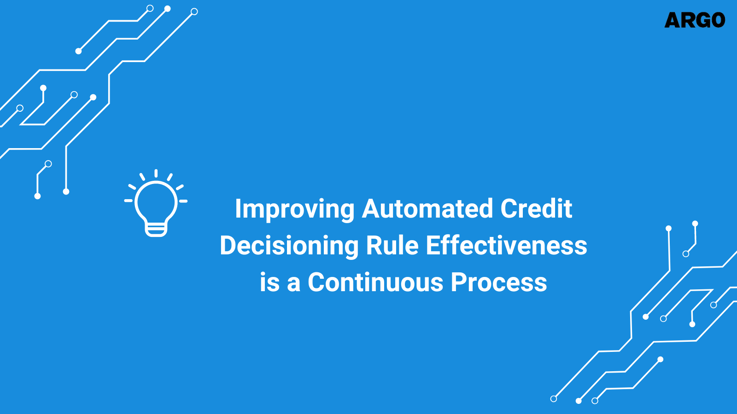Improving Automated Credit Decisioning Rule Effectiveness is a Continuous Process

Loan underwriting rule-based risk models are often established with clearly defined parameters but keeping them continuously quantifiable and effective over time is often more difficult. When rule tests fail, decisions are routed to manual underwriting processes, potentially leading to customer delays, inconsistent decisions, and lost revenue.
To avoid these scenarios, financial institutions should consider implementing solutions that ensure rules are relevant and useful for auto decisioning and deliver appropriate credit risk mitigation, approval/denial speed, and decision consistency. Additionally, solutions that financial institutions implement should reduce manual loan underwriting frequency and associated operating costs and increase loan pull-through rates and loan revenue.
Credit decisioning encompasses factors such as applicants, collateral, compliance, rules, policies, pricing, terms, conditions, third-party data, and decision node decision thresholds. This decision structure is successful when a real-time approval or denial decision is achieved. On the other hand, when various rule thresholds (or combinations of rule thresholds) are not met, manual underwriting reviews are required.
When this "second stage manual process" results in an approval or denial decision, how can this outcome better improve the auto-decisioning rule structures going forward? If a manual outcome resulted in an approval, was the original auto-rule correct, and was time/money wasted by directing it to a manual process? The solution aligns the outcome of the manual process to a longer-term probability-based rule definition improvement process by analysis of outcomes, refining the auto-rule structure's effectiveness. Thus, an ongoing optimization strategy tunes decision rules over time using historical decision outcomes, especially those for manually decisioned loans.
For more information, download the Using Analytical Software to Create Better Business Outcomes white paper.

